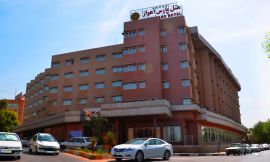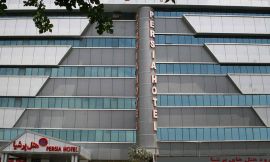
General Information
Ahvaz is a city in the southwest of Iran, and the capital of Khuzestan province. At the 2011 census, its population was 1,112,021 and its built-up (or metro) area with Sheybany was home to 1,136,989 inhabitants. Iran's only navigable river, Karun passes by the middle of the city. It has a long history dating back to the Achaemenid period. In the ancient times, it had been one of the main centers of the Academy of Gondishapur.
Based on Wikipedia, It is home to several universities, institutions, prominent companies and sport clubs. In Iran, it is known for its ethnic diversity. It is home to Persians, Lurs, Arabs, Jews, Iranian Armenians and Mandaeans, hence different languages are spoken in it although the lingua franca remains Persian.
Ahvaz has a desert climate with long, very hot summers and mild, short winters. Ahvaz is consistently one of the hottest cities on the planet during the summer, with summer temperatures regularly at least 45 degrees Celsius, sometimes exceeding 50 degrees Celsius with many sandstorms and duststorms common during the summer period.
Get in and around
There are daily flights to Tehran, Isfahan, and Shiraz. There are weekly flights to Dubai, Kuwait and Mashhad City.
You can travel from Tehran(capital city of iran) to Ahvaz with comfort car. The long of this travel is 10 h.
There are daily busses to and from many destinations in Iran.
There are daily trains to Tehran-Khorramshahr and Bandar Imam Khomeini. Ahvaz is the major junction for trains heading from the southern ports to Tehran, and from Tehran you can change trains and go further to Mashad or Tabriz.
Top sights & Things to do
When to visit?
The most popular time to see this city is during the autumn, winter and first of spring (Nov–Mar). Ahvaz's climate is a desert one. There is virtually no rainfall all year long in Ahvaz. The temperature here averages 24.9 °C. The rainfall here averages 215 mm. Precipitation is the lowest in June, with an average of 0 mm. In January, the precipitation reaches its peak, with an average of 50 mm. At an average temperature of 36.2 °C, July is the hottest month of the year. At 12.4 °C on average, January is the coldest month of the year.
| Jan | Feb | Mar | Apr | May | Jun | Jul | Aug | Sep | Oct | Nov | Dec | |
| High/Low temperatures |
18°
8°
|
21°
10°
|
26°
14°
|
32°
19°
|
40°
25°
|
45°
28°
|
46°
30°
|
46°
30°
|
42°
25°
|
36°
20°
|
26°
14°
|
19°
9°
|
|---|---|---|---|---|---|---|---|---|---|---|---|---|
| Chance of precipitation |
11%
|
9%
|
8%
|
6%
|
1%
|
2%
|
1%
|
0%
|
0%
|
1%
|
9%
|
12%
|









